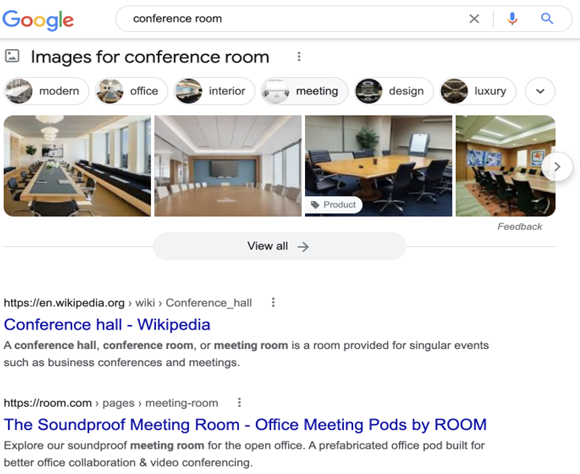When seeking to improve organic search result rankings, you often first evaluate keywords, content, backlinks, metadata, and the like. And although those are important to the SEO workflow, it's also important to consider high-quality images and video.
Images and video ensure that your content is in front of potential customers—in Web search listings, Google News, Google Discover, Image Search, and elsewhere in search results.
The time and effort you spend on SEO is vital to connecting with new customers: Fully 61% of B2B decision-makers start the buying process with a Web search, whereas a whopping 87% of retail shoppers do the same—vastly exceeding other channels, including display and social media.
So, how can you improve the rankings of your websites, content, apps, products, and business listings in search engines, whether Google, Bing, Yahoo, or others?
Optimizing imagery can be a gamechanger for businesses looking to boost their SEO strategy. In fact, it has become increasingly important over the last few years; many search results now contain images, and in some situations search algorithms require imagery in order to rank in content.
That can be seen in this screenshot of Google search results for "conference room" from an incognito browser in the US. Imagery appears in a large amount of space at the top of the results page, and it is therefore critical for ranking.

Here are five tips on how to use imagery and videos to driver stronger SEO.
1. Use stock photos and stock imagery if they look authentic and relevant
You don't need original imagery for your company's content to rank. Stock photos and imagery can actually be good for SEO.
We often see iStock's content in our customers' search results and in featured modules, proving that the original imagery isn't necessary and the old myth that stock photos impede SEO just isn't true.
Stock imagery and video work well to represent the content they're paired with for organic search, and they are used around the world every day.
For best SEO result, choose imagery that helps customers identify with your brand, the content you're creating, and that content's objectives.
2. Prioritize high-quality images and use the right file size and dimensions
As of May 2022, more than 50% of searches had a group of images or carousel of images in the organic search results in Google. That number has grown by more than three times in just the last 10 years. Choosing high-quality and correctly sized imagery is important to making the most of such results.
Use a high-resolution image—at least 1,200 pixels (px) wide—and one with an aspect ratio of 16×9, 4×3, or 1×1. When selecting images, make sure your images aren't too big, or of low quality or resolution. For example, if your hero image space is 1200 px wide and 628 px high, do not use an image larger than that.
Read this article about standard image sizes to learn more.
3. Be descriptive
Ensure that you're being descriptive with image titles, captions, file names, article copy, and "ALT" (alternate) text around and near the image. Also, use a relevant SEO page title and description; search engines usually use those to describe the page the image is on—or the image itself, if it appears in Google Image Search.
The same general best-practices are equally important for video. Your content, the words you say in your video, and the title and description all contribute to your ranking results. YouTube automatically creates a transcript of what you say, not only for closed caption features but also for understanding what the video is about.
4. Use structured data
Add structured data in the code of the page. Structured data reflects the technical representation of the imagery's meta-data: date created, location shot, file name, whether it's part of another item on the page, such as a product or recipe, etc. For videos, the length of the video and "key moments" are also valuable information.
5. Keep your strategy data-driven
You might already be using Google Trends for your SEO keywords and content. Continue to use a data-driven approach to how you're selecting your topics and visuals.
To best optimize your visual content, you need to understand the exact terminology your target segments are using to search so that you can tailor your content selections to best fit your audience—and it can take some digging to explore all your options.
Though you may be unsure where to start, there are tools available to help with visual segmentation and surfacing relevant, actionable insights.
The bottom line: the more data that you can find on the specific nuances that your targeted segment expects, the better prepared you'll be to deliver content that's relevant and engaging.
* * *
Optimizing your SEO strategy is incredibly important to your marketing efforts, and using imagery and video should be considered a high priority for a well-rounded SEO program.
Instead of coordinating costly content creation sessions, you can effectively use stock imagery and video to improve your content rankings and ultimately reach more potential customers.
More Resources on Using Images and Video for SEO
Five Ways to Optimize Your Videos for Search [Infographic]
One Tip to Improve On-Page SEO: Use More Mini-Infographics (A Guide)
Image SEO: A Step-by-Step Guide for Ranking in Search Engines [Infographic]




